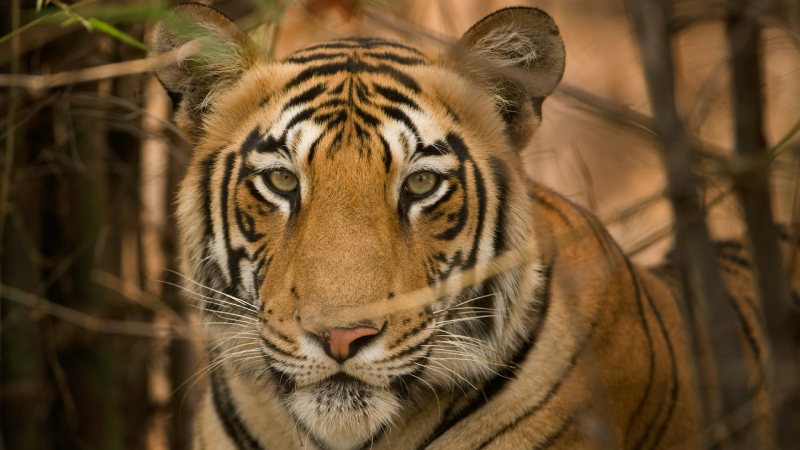
India, the ‘land of tigers’, harbors nearly 60% of the global tiger population. Once distributed widely across Asia, tigers have lost about 93% of their historical range worldwide and are now an endangered species. As ‘apex predators’, tigers maintain the health and diversity of an ecosystem by creating a balance between herbivores and the vegetation they feed upon.
To save what is left of these marvellous cats, conservation measures are aplenty. For example, India has 50 tiger reserves across the country. But, constrained by the small size of these reserves, and the presence of only a few individuals in each, many of these reserves are faced with challenges of chance events and inbreeding depression, where the offspring may lose vigor and health due to mating between relatives. Thus, it becomes important to identify genetically connected populations to remediate possible side-effect of small population size and isolation. But how do we do that? A recent study led by researchers from the National Center for Biological Sciences (NCBS) may have answers.
“So far, success of a conservation program is measured by the increase in the number of individuals under protection. But, this should not be the sole criterion, as protecting genetic variants of a species is equally important. We wish to protect not just numbers, but the genetic variants as well”, says Dr. Uma Ramakrishnan, faculty member of Ecology and Evolution, NCBS and a co-author of the study published in Nature’s Scientific Reports. The study has revealed interesting genome-wide details of tiger populations in across India, which might be very useful for designing conservation strategies for Indian tigers.
The researchers collected samples from wild tigers (Panthera tigris tigris) across India for a genome-wide comparison to see if different groups were genetically connected. They identified 3 genetically distinct clusters corresponding to north-west, southern and central parts of India. They then assessed the genetic variation in these clusters.
The results of the study showed that the northwestern cluster, which contained samples from the Ranthambore tiger reserve, had the least genetic variation of all. The cluster from central India, on the other hand, showed higher variation. The researchers attribute this observation to the many inter-connected protected areas within central India that could have resulted in high genetic diversity in this cluster.
With these findings, the researchers point out that since the probability of extinction of small, relatively isolated populations, like Ranthambore, is high, it needs conservation attention to ensure that tigers survive here. One of the options that Dr. Uma recommends is introducing individuals from another population to offset the low genetic variation in a ‘Ranthambore like situation’. “Any such introduction should be done only after confirming that there is no local adaptation or Ranthambore-specific genes that would suffer detrimentally from such a transfer”, cautions Dr. Uma. “Linking these areas to other tiger reserves through natural corridors could be the best long-term solution”, she adds.
So far, tiger monitoring strategies in our country are mostly focused on estimating tiger numbers. While genetic data cannot replace camera-trap data in estimating populations, they add value in determining how variable a population is and how connected different populations are in a landscape.
Dr. Uma says that the next logical step is to have a database of tigers based on their genomic variations. This, she says, will help conservation across countries without the hindrance of borders “While genetic samples cannot be shared across borders, genetic data can be. I hope we can move to a global tiger genetic database. Such a database will be critical for understanding population recovery, connectivity and even for assigning confiscated skins/ tiger parts”, she says about her big vision.
